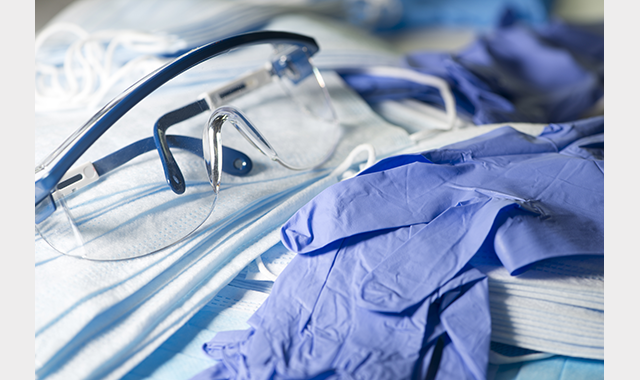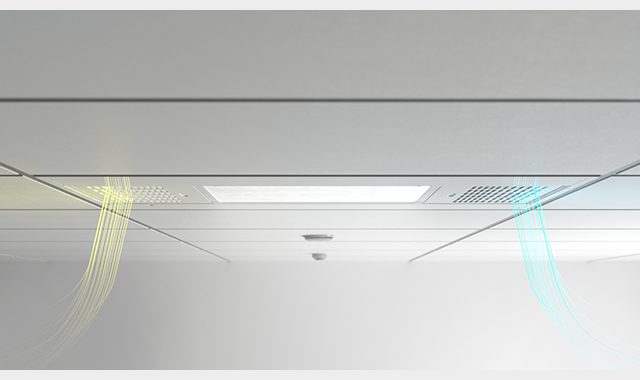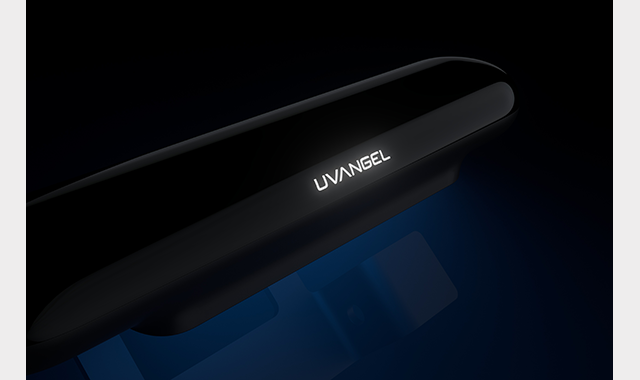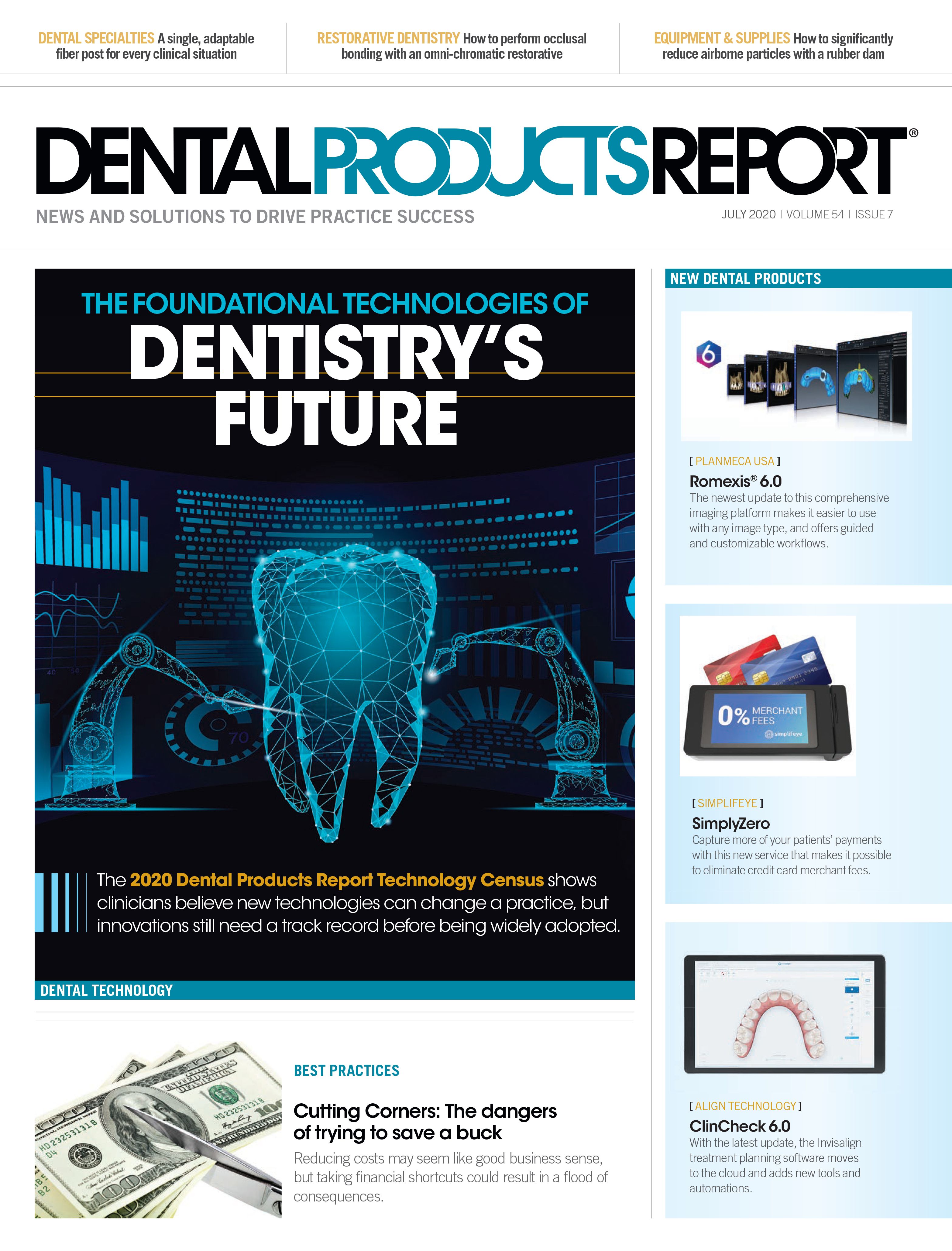New Approaches to Infection Control
Times are changing and infection control protocols must keep up.

Bob Dylan was 100 percent right-The Times They Are A-Chaingin’-and dentists must be able to change with those times.
The COVID-19 pandemic forced dental practices to re-think the ways in which infection control is approached. While traditional methods were certainly an effective means of controlling infection transmission, when the doors do finally reopen on a regular basis, practices are likely going to want new, more effective, ways to keep themselves and patients safe. If anything positive can be taken from the pandemic, it’s that new approaches to infection control are receiving more scrutiny.
UV light
UV Angel produces technologies that utilize ultraviolet light to disinfect in two arenas.
“We design and build pathogen controls to reduce viruses, bacteria, and fungus on surfaces and in the air,” Tom Byrne, UV Angel CEO says. “It then reduces levels of harmful pathogens through these control technologies and, thus, we limit the risk of exposure for patients and healthcare employees and families.”
The UV Air is designed to continuously treat air and fits into a traditional light fixture.

UV Angel has two main products-the UV Angel Air and the UV Angel Adapt. The Air is an automated continuous air treatment system that uses ultraviolet light to continually treat the air and is designed to fit a traditional ceiling light fixture. The UV Adapt model offers the option of cleaning workspaces without interrupting the workflow by using an intelligent automated ultraviolet light treatment platform. The Adapt series can attached directly to devices and equipment without being obtrusive.
The UV Adapt cleans high-touch surfaces, such as keyboards and workspaces.

“It’s another engineering control,” says Dr. Linda Lee, UV Angel chief medical affairs and science officer. “It’s kicking on and kicking off a UV light at a low dose. You use the light on high-touch surfaces like keyboards, monitors, and other equipment, and it’s just running a cycle. So, when the dentist goes to the next chair, it may run a cycle on the keyboard. If the person inadvertently touches the keyboard with their gloves on or they haven’t washed their hands or if particles are falling onto the keyboard, this is also continually treating that surface.”
UV Angel’s technology is especially attractive now, given concerns about infection transmission through the air or on surfaces.
“The thing that we’re struggling with right now as a country is getting back to work,” Dr. Lee says. “We know people are afraid to leave their homes and go back to the office or even to the dentist. And as business owners are preparing to reopen your doors, we understand how critical it is that employees and patients feel safe in your space. To ease minds, we’ve been really focusing on how to make healthcare and, quite frankly most environments, safer for workers and patients-adding an extra layer of protection.”
The system is designed to work in the background so that staff need not add another chore to their already hectic day.
“We install our air unit over the patient area and it continuously-24/7, 365 days a year- treats the air every 0.7 seconds. It’s in no way causing something for the patient to trip over or for people to have to work around. It actually is running all the time, removing airborne contaminants, pathogens, bacteria, fungus, viruses from the air, constantly.”
Surfaces
Aquaox offers its own product for surface disinfection. Their solutions utilize electrolysis-treated salt brine to create two types of solutions-the first uses hypochlorous acid.
“That’s a chemical in our bodies that we generate to ward off any types of infections when we get cut,” Mark Nagano, Aquaox vice president of operations says. “It’s generated by white blood cells, and they use hypochlorous acid to fight any pathogen trying to invade into our body. Hypochlorous acid is the main ingredient in bleach that does all the killing, but ours is up to 300 times stronger than bleach.”
Their other solution is a high-alkaline water that emulsifies grease and oil very quickly.
“It does have antimicrobial properties, but both solutions are considered all-natural,” Nagano says. “Our solutions are non-toxic, non-corrosive. As you can imagine, because we only use salt and water to make these solutions, we are actually considered organic.”
Aquaox’s solutions are registered with the EPA as a hospital-grade, broad spectrum disinfectant. They were recently approved in Canada to treat COVID-19 and are waiting for similar approval in the U.S.
Continue reading on the next page...
Rather than just spraying the solutions on specific surfaces, Aquaox utilizes electrostatic spraying to treat an entire room. Nagano compares electrostatic spring to rubbing a balloon on someone’s hair and then hair standing up.
“Electrostatic spraying puts a charge on to the product coming out,” Nagano says. “That charge is 70 times greater than gravity. When it comes out, that droplet won’t just fall to the ground. That droplet has a positive charge on it and everything, inherently, has a negative charge, so it adheres to everything-the ceiling, the wall, the tabletop, under the table, the legs. We are getting total room coverage with our disinfectant.”
The company’s solutions are also non-corrosive and biodegradable, Nagano says.
“You can spray the whole room and walk away,” he explains. “With regular disinfectants, like bleach, you can’t do that. If you did that for a week, everything in that room would start being corroded, not to mention you can’t breathe it in. Using our products, dentists can extend the life of their equipment and their furniture.”
Air
In addition to new technologies, this is a good time to revisit the efficacy of some existing practices, such as air treatment, says infection prevention speaker, author, and consultant, Mary Govoni. The challenge is that dentists always work with high volume evacuation (HVE) because they have an assistant to manage it for them. However, this is more difficult for hygienists.
“The hygienists, on the other hand, especially when they’re using an ultrasonic scaler, don’t necessarily have someone or some way to manage that, so they use low-volume suction or the saliva ejector,” Govoni says. “There are lots of devices now that are available that don’t require the hygienist to hold onto them while they’re using their ultrasonic scaler. They can be placed in the mouth and secured. There are a number of them on the market, and as long as they work with the high-volume suction, then that alleviates again about 90 percent of that aerosol. And then, of course, there’s the old tried-and-true dental dam. But they are not very popular because it’s a little time consuming to apply. It doesn’t work with every procedure, but nonetheless, it’s a great way to control air assault,” she says.
Best practices
Given the uncertainty, dentists may be hesitant to invest in any new technologies during the pandemic. Dentists lack firm guidance from either the Centers for Disease Control (CDC) or from Occupational Safety and Health Administration (OSHA), Govoni says.
“What we have in place is interim guidance. That is geared toward treating emergency patients only. The American Dental Association has really been pushing the CDC to update their interim guidance. I’m guessing they’ve done the same thing with, with OSHA, but that’s the struggle,” she says.
Another concern is to what extent, and for how long, stepped-up efforts will be necessary.
“We may not have to do extra things forever,” Govoni observes. “Once the pandemic has died down, maybe we will see that we won’t see that there’s such a great threat. Maybe we don’t have to wear N95 masks all the time, or maybe we don’t have to worry about the aerosols,” she says.
What other infectious diseases or contagions should the dental industry prepare for? Other than COVID-19, infection control preparation should include the common cold, flus, and tuberculosis, Govoni suggests. Protecting against aerosols now and post COVID can help mitigate the spread of future pandemics.
“We know that, in laboratory settings, aerosols can stay in the environment for up to three hours,” Govoni says. “And what about when we’re removing amalgam restorations and the potential for mercury to be separated out from that amalgam and potentially aerosolized? So, I think what COVID has done is really shined a very bright light on the issue of aerosols in dentistry, in general. As we keep hearing from some of the public health officials, there will be another Coronavirus out there or a pandemic influenza out there. If we start looking at what we can use long-term, in terms of containing or mitigating the aerosols, then we’re going to make a healthier environment in this era and planning for the future. It’s not just about COVID, it’s about what comes next, which is a scary thought.”
When it comes to infection control and prevention, listen to Bob Dylan’s advice and be adaptable to an ever-changing landscape.

Maximizing Value: The Hidden Benefits of Preventing Hospital-Acquired Pneumonia Through Oral Hygiene
September 10th 2024Originally posted on Infection Control Today. Hospital-acquired pneumonia (HAP) is a significant infection prevention concern, leading to high patient mortality, increased health care costs, and ICU usage. Oral hygiene is an effective preventive measure.